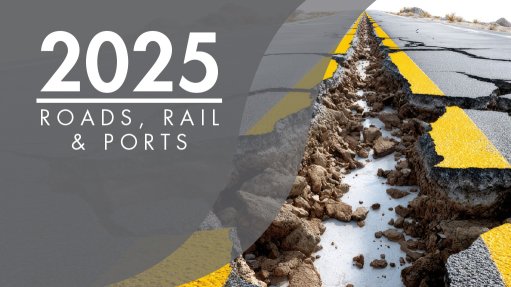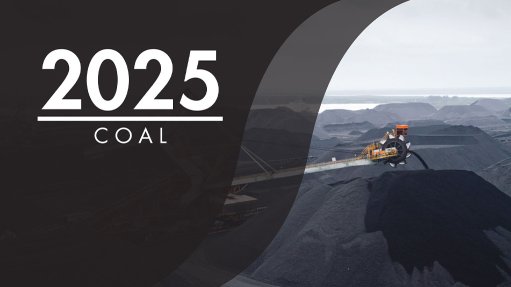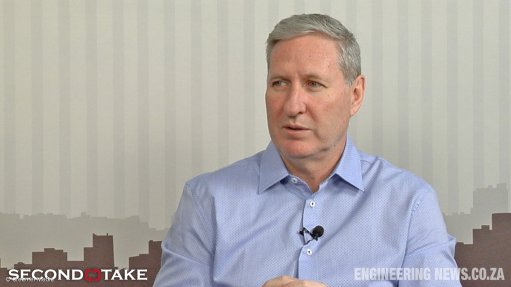Emerging solar tech crucial in energy mix


SESHNI NAIDOO Solar energy is crucial in ensuring a sustainable, secure and affordable energy supply
Solar power integration, through PV, concentrated solar power (CSP) technology in specific applications, and hybrid solutions including battery energy storage systems (BESS), is crucial in South Africa’s energy mix as global energy demands continue to rise, says independent power producer (IPP) ENGIE South Africa engineering head Seshni Naidoo.
She emphasises that solar energy is crucial in ensuring a sustainable, secure and affordable energy supply for South Africa while complementing other renewable and conventional energy sources.
PV systems can harness South Africa’s abundant sunlight to generate electricity without producing greenhouse gases, making it key in reducing carbon emissions and combating climate change, Naidoo explains.
Further, PV technology offers faster construction periods with reduced operational complexity, and minimal maintenance requirements, with life spans typically exceeding 25 years, making it a cost-effective solution in the long term.
Naidoo asserts that solar PV technology has been a disruptor in the power sector, significantly simplifying the electricity generation process and making it a lot more accessible.
Key advancements in solar technology, particularly in PV systems, have helped to simplify processes across the value chain, especially when compared with traditional thermal power plants. PV systems reduce complexity, carbon emissions and water use across all phases, including design, construction and operation.
Further, its modular nature, combined with continuous improvements, enhance efficiency and cost reductions, making solar increasingly attractive for residential and industrial applications.
Naidoo also highlights its economic benefits, noting that the solar industry stimulates job creation in manufacturing, installation and maintenance, particularly in residential applications and utility-scale applications in remote but resource-intensive areas of the country. Solar projects also contribute to socioeconomic development in local communities surrounding the power plant.
Solar energy systems are also versatile and scalable, ranging from small rooftop installations to large-scale farms. They can be executed faster than traditional plants and integrated with other energy sources, such as wind and battery storage, to provide hybrid solutions for various energy demands.
CSP
In South Africa, CSP has offered several advantages, including efficiently integrating solar resources with cost-effective thermal energy storage to help respond to loadshedding. This allows for energy to be stored during daylight hours and dispatched during peak energy consumption periods or at night, consequently enhancing grid reliability and reducing intermittency.
CSP technology provides reliable baseload power through molten salt storage, ensuring continuous energy supply and stability in the energy mix.
Further, CSP plants achieve this by capturing and concentrating sunlight through the use of mirrors, heat transfer fluids, tracking systems and thermal storage.
However, Naidoo acknowledges the challenges with CSP technology, including the high initial costs associated with the specialised equipment, complex thermal storage and reticulation systems, and labour intensive operations, as well as cost competition and competitor optimisation by hybrid PV and battery systems.
In comparison to PV, CSP technology also requires greater volumes of water for steam generation, mirror cleaning and cooling purposes, which poses difficulties in remote and/or water-scarce regions, she adds.
Geographic limitations are also challenging, as CSP is most effective in regions with high solar radiation and clear skies, limiting its application and efficiency in areas with frequent cloud cover or lower direct sunlight levels.
Additionally, extensive transmission infrastructure is needed to deliver electricity from typically remote CSP plants to urban centres, resulting in high grid implementation costs, transmission losses and integration challenges.
The plants require accurate operational strategy and deftness in energy balancing to reach optimal operating temperatures and power output, which can hinder their responsiveness to sudden changes or shifts in electricity demand.
Naidoo says ENGIE is actively working to overcome these obstacles through partnerships with industry experts, technology providers and other stakeholders along the value chain, to continuously optimise and improve.
Technological Advancements
“The next decade promises to be transformative for the solar energy sector, driven by several emerging trends and technologies that will enhance efficiency, reduce costs and broaden adoption,” says Naidoo.
Digital technologies, such as AI and Internet of Things, are enhancing solar system efficiency through smarter grid management, predictive maintenance and real-time data analytics and monitoring.
These advancements allow for the precise monitoring and control of even rooftop systems, enabling users to adjust their energy consumption based on system reliability, demand profiles and costs.
These technologies also ensure safety and electrical compliance, providing visibility through user-friendly apps for quick responses to alerts. Excess power can be sold back to the grid once regulations allow for that, offering cost benefits to users while adding capacity for grid operators, she adds.
Another key trend is the integration of hybrid systems, which combine solar with other renewables to create a more balanced energy mix while reducing reliance on fossil fuels.
Naidoo predicts greater adoption of hybrid technologies, which couple solar or wind with battery storage for reliable, dispatchable power. Technology advances will make these systems more scalable and cost-effective.
Meanwhile, ENGIE has adopted various innovations, such as the use of bifacial solar panels that capture sunlight from both sides, and GPS tracking systems for ground-mounted plants that optimise sun exposure, improving efficiency and lower costs.
It has also introduced low-maintenance solutions that enhance the reliability and longevity of solar systems. The company has adopted robotic cleaning systems on some plants, which keep solar panels clean and operational with minimal human intervention, reduce operational costs and ensure that the panels operate at maximum efficiency throughout their life span, Naidoo concludes.
Article Enquiry
Email Article
Save Article
Feedback
To advertise email advertising@creamermedia.co.za or click here
Comments
Press Office
Announcements
What's On
Subscribe to improve your user experience...
Option 1 (equivalent of R125 a month):
Receive a weekly copy of Creamer Media's Engineering News & Mining Weekly magazine
(print copy for those in South Africa and e-magazine for those outside of South Africa)
Receive daily email newsletters
Access to full search results
Access archive of magazine back copies
Access to Projects in Progress
Access to ONE Research Report of your choice in PDF format
Option 2 (equivalent of R375 a month):
All benefits from Option 1
PLUS
Access to Creamer Media's Research Channel Africa for ALL Research Reports, in PDF format, on various industrial and mining sectors
including Electricity; Water; Energy Transition; Hydrogen; Roads, Rail and Ports; Coal; Gold; Platinum; Battery Metals; etc.
Already a subscriber?
Forgotten your password?
Receive weekly copy of Creamer Media's Engineering News & Mining Weekly magazine (print copy for those in South Africa and e-magazine for those outside of South Africa)
➕
Recieve daily email newsletters
➕
Access to full search results
➕
Access archive of magazine back copies
➕
Access to Projects in Progress
➕
Access to ONE Research Report of your choice in PDF format
RESEARCH CHANNEL AFRICA
R4500 (equivalent of R375 a month)
SUBSCRIBEAll benefits from Option 1
➕
Access to Creamer Media's Research Channel Africa for ALL Research Reports on various industrial and mining sectors, in PDF format, including on:
Electricity
➕
Water
➕
Energy Transition
➕
Hydrogen
➕
Roads, Rail and Ports
➕
Coal
➕
Gold
➕
Platinum
➕
Battery Metals
➕
etc.
Receive all benefits from Option 1 or Option 2 delivered to numerous people at your company
➕
Multiple User names and Passwords for simultaneous log-ins
➕
Intranet integration access to all in your organisation

















